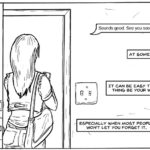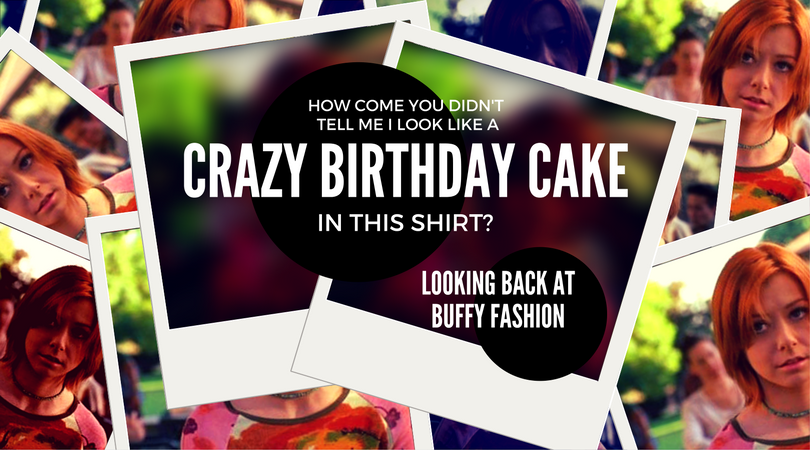
Last week, Hot Topic announced a new collection of clothes inspired by trademark outfits on Buffy the Vampire Slayer. Looking at the three pieces—a red Buffy trench coat, a black Faith leather jacket, and a fuzzy pink Willow sweater—it’s dawned on many fans that the fashion sense on Buffy maybe isn’t the best aspect of the show to memorialize. The ‘90s and early ‘00s weren’t kind to anyone, and Buffy is like a time capsule for some of the worst offenders. Butterfly clips? Bucket hats? Crimped hair? Overalls? Just Xander’s whole deal?
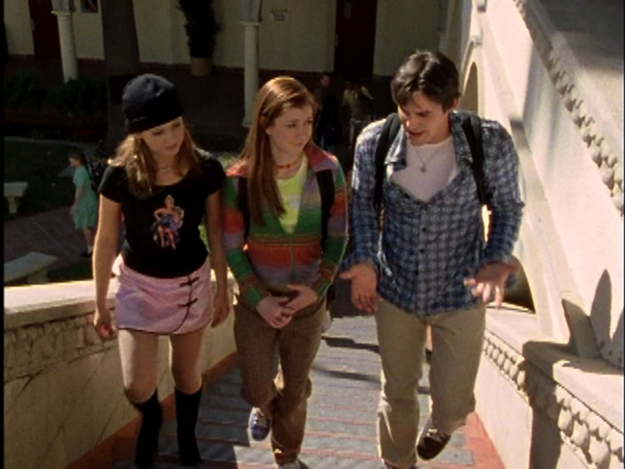
“Re-watching Buffy always makes me embarrassed when I see things that I definitely wore at the time,” says Megan Patterson, who writes about fashion for The Mary Sue. “I was all about crimping my hair and butterfly clips, so I am very pro-Buffy hair,” she continues, but not every look on the show brings back positive memories. Xander’s shirts remind Patterson of “every boy at [her] high school circa 2000, pretty much,” which isn’t saying much for boys at her high school. Alex Nursall, who writes about make-up for Apartment Therapy, observes that “this is the problem when shows skew super trendy: they do not age well, fashion-wise.”
But not all of the bad outfits on the show were based on real trends at the time. The signature abundance of leather/pleather on the show doesn’t reflect any real teenagers I knew, and as for all the miniskirts, Patterson jokes “I feel like most of us would have gotten kicked out of school and told to change!” Nursall feels that the miniskirts “are really dated,” and probably the result of the costumers “dressing adults to look like teens to look like teens trying to dress like adults.” She also wonders about the practicality of wearing miniskirts while fighting demons, asking “how do you kick someone in that? I mean, you have full range of motion, I guess.”
Cynthia Bergstrom, head of costume design for most of the show’s run, said in an interview that Buffy’s impractical skirts at the beginning of the series were deliberate: “Her clothing reflected an innocence and youthful charm. As she accepted her calling and began her training and fighting into the night her costumes became more about function and a reflection of what was going on internally.” And while we all remember the miniskirts clearly, Buffy was wearing a lot more athletic gear in season 3. Besides, as Patterson comments, “it kind of made sense Buffy wanted to look fly [because] she was from The Big City.”
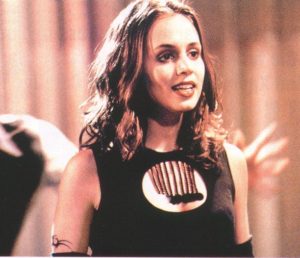
“For Willow,” Bergstrom remembers “the cute fluffy sweaters. People loved those sweaters. Bunnies, Butterflies, etc. Pink & Fuzz. She was really easy to costume.” Nursall and Patterson would both question who exactly loved Willow’s awful sweaters. “Willow’s outfits are so bizarre because like, it’s SoCal, but she’s always dressed like it’s cold, but then she’s also got to protect her face from the sun in these terrible hats. WHICH IS IT, WILLOW?” begs Patterson, asking a question we were all wondering. She jokes that “Willow never met a pair of overalls she didn’t like, but then she realized she wanted to have sex one day,” but also acknowledges that this was part of a larger effect of infantilizing the character through her wardrobe in the early seasons. Nursall agrees, calling Willow’s frequent pigtails “little girl hair.” She points out the pervasive ‘90s trend where vaguely nerdy women characters have to “dress in clothes that are all a little too long and a little too shapeless.” Willow’s style starts to change noticeably in season 4 as she gains confidence in herself through magic, but it’s hard not to notice that it’s “once she gets love interests [that] she starts dressing more her age,” observes Patterson. Willow’s outfits never got great, though, says Nursall: “she was either Twee Baby or I’m a Grown-up Now or ANGRY GOTH and all of it aged as well as a banana left on the counter.”
 Still, Buffy fashion wasn’t all bad. As in a lot of TV, the villains are “much more capital F Fashion than the good guys,” says Patterson, specifically calling out Drusilla’s many flowy dresses. Like Willow, Dru was meant to be childlike (who could forget her creepy doll), but she got to dress, mostly, like an adult. Glory had some great outfits, and fantastic ‘90s hair, which Nursall describes as “Waves! Parted in the middle! A little too much gel!” Even reformed antagonists fare better than the good guys: “Anya’s looks have aged really well because she was SUPER into vintage. She wears a lot of ’40s silhouettes,” Patterson says. Sometimes-villain Faith “had the most defined personal style on the show,” says Patterson, and Nursall agrees, calling Faith’s fashion “by far [her] favourite” on Buffy. Even frenemy Cordelia had some iconic looks, (like her fab post-breakup outfit in “The Wish”), and Patterson now frequently finds herself “wondering what lipstick Cordie is wearing” when she re-watches the show. “Makeup-wise this show had a lot of the 90s highlights,” observes Nursall, who likes the makeup’s “roughness . . . which fits in well with the transitional period from the mid-90s into the later part of the decade.”
Still, Buffy fashion wasn’t all bad. As in a lot of TV, the villains are “much more capital F Fashion than the good guys,” says Patterson, specifically calling out Drusilla’s many flowy dresses. Like Willow, Dru was meant to be childlike (who could forget her creepy doll), but she got to dress, mostly, like an adult. Glory had some great outfits, and fantastic ‘90s hair, which Nursall describes as “Waves! Parted in the middle! A little too much gel!” Even reformed antagonists fare better than the good guys: “Anya’s looks have aged really well because she was SUPER into vintage. She wears a lot of ’40s silhouettes,” Patterson says. Sometimes-villain Faith “had the most defined personal style on the show,” says Patterson, and Nursall agrees, calling Faith’s fashion “by far [her] favourite” on Buffy. Even frenemy Cordelia had some iconic looks, (like her fab post-breakup outfit in “The Wish”), and Patterson now frequently finds herself “wondering what lipstick Cordie is wearing” when she re-watches the show. “Makeup-wise this show had a lot of the 90s highlights,” observes Nursall, who likes the makeup’s “roughness . . . which fits in well with the transitional period from the mid-90s into the later part of the decade.”
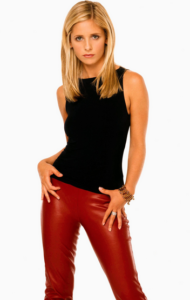 Personally, I’m incredibly fond of Buffy’s white dress/black leather jacket combo from the first season finale. While not a look anyone could pull off in real life (it doesn’t work without the crossbow to tie the outfit together), it feels emblematic of what made Buffy so distinct at the time: this teenage waif, who was dressed for a school dance who is also the saviour of the world. When I picture Buffy, it’s usually in those red pants, but I think the first-season finale costume is her most iconic.
Personally, I’m incredibly fond of Buffy’s white dress/black leather jacket combo from the first season finale. While not a look anyone could pull off in real life (it doesn’t work without the crossbow to tie the outfit together), it feels emblematic of what made Buffy so distinct at the time: this teenage waif, who was dressed for a school dance who is also the saviour of the world. When I picture Buffy, it’s usually in those red pants, but I think the first-season finale costume is her most iconic.
Whose fashion sense is your favourite on Buffy? Are there any outfits you’re ashamed to admit you wore too? Let us know @RoguesPortal!

![[REVIEW] WELCOME BACK TO THE WASTELAND IN ‘WASTELANDERS: WOLVERINE #1’](https://geekd-out.com/wp-content/uploads/2021/12/Wastelanders-Cropped-150x150.jpg)

